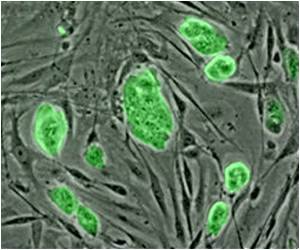
US Patient & Oncologist Awareness, Usage, & Attitudes Toward Whole Person Integrative Oncology
Go to source). One-third of oncologists said their patients lack interest in these therapies, but only 13% of cancer patients cite a lack of interest when asked about barriers.
60% of Cancer Patients Strongly Support Complementary Therapies
“Navigating a cancer diagnosis is about treating the whole person, not just the disease,” said Wayne Jonas, MD, President of Healing Works, a non-profit dedicated to the integration of healing and curing in routine health care delivery.‘For a comprehensive approach to treat cancer, oncologists should combine cancer treatments with complementary medicines. #cancer #complementarytherapy #betterprognosis’
Tweet it Now
“Oncologists are the single most influential factor in patient treatment decisions, and doctors must be educating themselves to help drive patient outcomes and treatment satisfaction. They need to understand that patients increasingly want to hear directly about all possible support during and after treatment of cancer.”More than 60% of cancer patients strongly believe in complementary therapies, and 71% want their health systems to offer them, according to the survey of more than 1,000 patients and 150 oncologists conducted in June and July. In fact, 55% of patients would have chosen a health system with more complementary therapies if they could go back in time, up substantially from 40% a year ago.
Among oncologists, most (57%) believe that complementary therapies are effective at managing the side effects of treatments, while a third (33%) indicate that they improve overall survival.
Yet, when asked about usage, perceptions differed. Sixty-four percent of cancer patients report using at least one complementary therapy, yet most of them never informed their oncologists. As a result, oncologists think only 40% of patients use one of these approaches.
What Hinders Cancer Patients to Pursue Complementary Therapies?
“A communication gap — not an interest gap — appears to be one of the biggest barriers between patients and oncologists when exploring complementary options to support overall treatment,” said Jonas. “Clinicians need to be proactive and talk to their patients about evidence-based integrative health options early in the process before patients go exploring on their own, and possibly get into trouble.”Patients also noted additional barriers to adoption, including the need for education about the benefits, reimbursement or other funding help, and a lack of guidance from their oncologist. Oncologists agree that insurance reimbursement is a major barrier, but also report that health systems do not have enough physical therapists, psychologists, and pain specialists to offer these therapies.
Advertisement
- Hispanic (92%) and African American (83%) patients report the highest usage of complementary therapies and are interested in learning more about them.
- Seventy percent of female patients support the use of complementary therapies, while actual usage is nearly equal between men (62%) and women (66%).
- Younger patients (ages 18-50) are more likely to use a range of complementary therapies, especially mental health support/therapy, nutrition counseling, and meditation or mindfulness.
Reference:
- US Patient & Oncologist Awareness, Usage, & Attitudes Toward Whole Person Integrative Oncology - (https://healingworksfoundation.org/CancerSurvey2023/)
Source-Eurekalert















